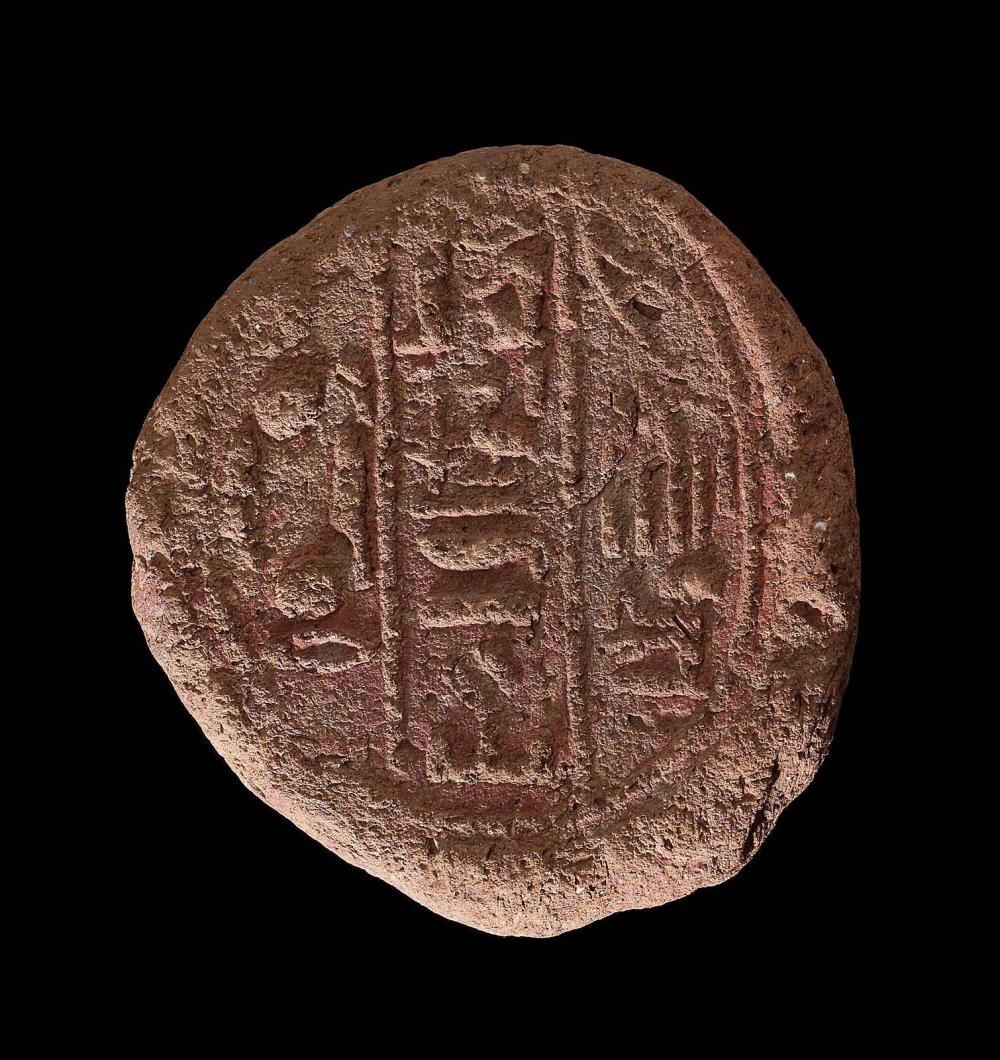Advanced Search 

Funerary cone of Merymose
Egyptian
New Kingdom, late Dynasty 18, reign of Amenhotep III and later
1390–1295 B.C.
Object Place: Egypt, Thebes (Qurnet Murai), Likely from tomb 383
Medium/Technique
Pottery
Dimensions
Width x length: 7.8 x 3.8 cm (3 1/16 x 1 1/2 in.)
Credit Line
Hay Collection—Gift of C. Granville Way
Accession NumberRES.72.320
NOT ON VIEW
CollectionsAncient Egypt, Nubia and the Near East
ClassificationsArchitectural elements
Catalogue Raisonné
Davies & MacAdam 170
DescriptionFunerary cone fragment of reddish clay with tapering cone element broken off. Traces of red paint on head end, which also carries a circular stamp of three divided columns of hieroglyphic text. Text identifies the owner as "One Honored by Osiris, King's Son of Kush Merymose" (imAxy xr Wsir sa-nswt n KS Mr(y)-ms). This individual was a son of King Amenhotep III of Dynasty 18.
Funerary cones were components of a frieze, inserted above the doors of private tombs, particularly in the Theban region. They have been variously interpreted as: name-plates of sorts to identify the tomb owner, decorative memorials, boundary markers for a tomb, dummy bread loaves or meat offerings, symbolic roof beams, or (for the visible circular head) depictions of the sun disk.
For other examples of this tomb owner and stamp see: RES.72.319, RES.72.321.
Davies and Macadam, A Corpus of Inscribed Egyptian Funerary Cones (1957), type #170.
Funerary cones were components of a frieze, inserted above the doors of private tombs, particularly in the Theban region. They have been variously interpreted as: name-plates of sorts to identify the tomb owner, decorative memorials, boundary markers for a tomb, dummy bread loaves or meat offerings, symbolic roof beams, or (for the visible circular head) depictions of the sun disk.
For other examples of this tomb owner and stamp see: RES.72.319, RES.72.321.
Davies and Macadam, A Corpus of Inscribed Egyptian Funerary Cones (1957), type #170.
ProvenanceProbably from tomb 383, Qurnet Murai (Thebes). By 1836: Robert Hay Collection, Linplum, Scotland; 1863: to his son, Robert James Alexander Hay; 1868-1872: Way Collection, Boston (purchased by Samuel A. Way through London dealers Rollin and Feuardent, 27 Haymarket); 1872: given to the MFA by Samuel's son, C. Granville Way.
(Accession Date: June 28, 1872)
(Accession Date: June 28, 1872)
